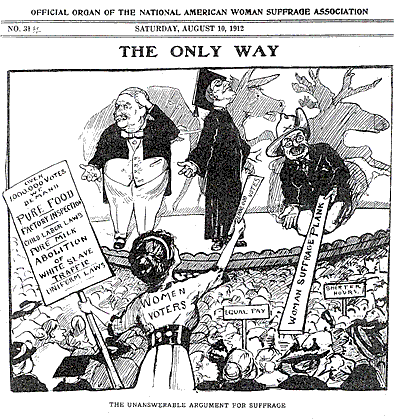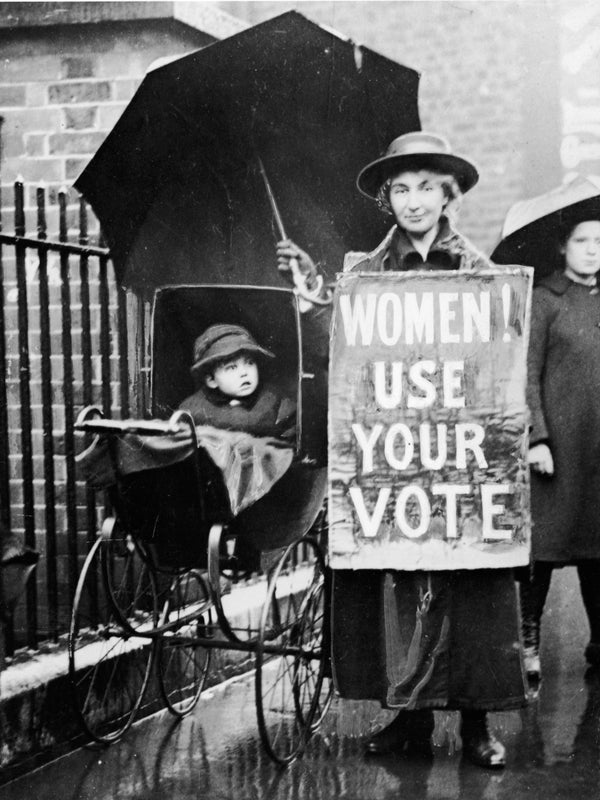It's almost the end of October and we want to be sure to celebrate suffragists who were born this month!




October 9

Mary Ann Shadd Cary (1823-1893)
October 9 was Mary Ann Shadd Cary's birthday. The first African-American woman publisher in the United States and Canada, Mary Ann was an abolitionist and later a suffragist. Her newspaper, The Provincial Freeman, was published in Canada but circulated in the United States as well.
During the Civil War, Mary Ann helped recruit African Americans to enlist in the Union Army. In 1883, at the age of 60, she earned a law degree and became the second African American woman to become a lawyer. Mary Ann fought in the courts for her right to enfranchisement and eventually, became the first African American to vote in a federal election. She was a member of the National Woman Suffrage Association and her home in Washington D.C. is a national historic landmark
October 13

Mary Barr Clay (1839-1924)
Mary Barr Clay joined the ranks of suffragist after her parent's divorce in 1878. Her mother was left homeless after a 45 year marriage and soon afterward Mary attended her first suffrage meeting. She was the first woman from Kentucky to give a speech on suffrage and the first Kentuckian to become president of a national woman's suffrage group (the American Woman Suffrage Group). Her sister Laura Clay joined and was also a prominent suffragist.
October 17

Mary Newbury Adams (1837-1901)
Mary Newbury Adams founded the Northern Iowa Suffrage Association and was an active supporter of women. She joined the movement in 1869 after hearing a speech by Elizabeth Cady Stanton. She was inducted into the Iowa Hall of Fame in 1981!
October 27

Happy Birthday Mr. President
Teddy Roosevelt (1858-1919)
Teddy Roosevelt included women's suffrage in his 1912 campaign to become President. Although he did not win, he continued to advocate for women's suffrage He supported the suffrage campaign in New York state which finally passed in 1917.
The above cartoon depicts the presidential race from the perspective of suffragists. Howard Taft is the left and appears bewildered by the concept, Woodrow Wilson (who would win the election) is depicted as considering suffrage idealism below him. Only Teddy is offering a plank and assistance to the women.
The above cartoon depicts the presidential race from the perspective of suffragists. Howard Taft is the left and appears bewildered by the concept, Woodrow Wilson (who would win the election) is depicted as considering suffrage idealism below him. Only Teddy is offering a plank and assistance to the women.
In 1880--only two years after Mary Barr Clay's mother was left homeless because of her divorce--Roosevelt wrote this:
"Viewed purely in the abstract, I think there can be no question that women should have equal rights with men...In the very large class of work which is purely mental, it is doubtful if women are inferior to men. Individually many women are superior to the general run of men. If we could once thoroughly get rid of the feeling that an old maid is more to be looked down upon than an old bachelor, or that woman's work, though equally good, should not be paid as well as man's, we should have taken a long stride in advance...
I contend that, even as the world now is, it is not only feasible but advisable to make women equal to men before the law...Especially as regards the laws relating to marriage there should the most absolute equality preserved between the two sexes. I do not think that woman should assume the man's name. The man should have no more right over the person or property of his wife than she has over the person or property of her husband. I would have the word "obey" used no more by the wife than by the husband."






































